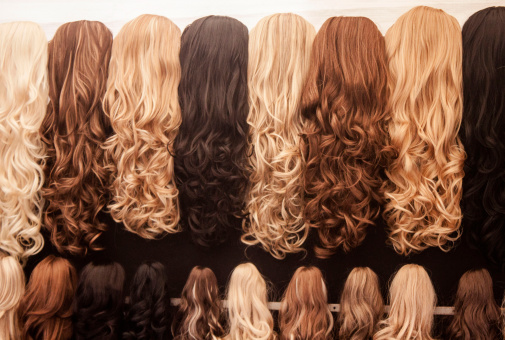A wig is a kind of head covering, typically worn in public to conceal hair loss resulting from medical conditions like cancer or alopecia, or for cosmetic reasons.
A wig can be made of natural or synthetic fibers.
Natural wigs are composed largely or exclusively of human hair and may be one of the most expensive hair care items on the market.
Synthetic wigs are the most common type, with fibers such as polyester, rayon and nylon being used; they may also include human hair blended with these materials.
Many of the types of wigs worn today have been around for centuries and are actually much older than the standard synthetic product.
These traditional wigs can be made from real hair and their length is determined by the size of the customer’s head; some people have claimed to have worn their own hair for up to fifty years.
The most common natural wig is a full wig which covers all or most of a person’s head, and includes both long, loose outer sections that can be adjusted with pinched or bobby pins, and longer inner sections.
Many people find wearing a full wig uncomfortable however, as it can restrict breathing and make sleeping difficult.
How are Natural wigs made :
1. Hair is collected from various sources – it can be purchased on the open market, or donated by family and friends.
2. The hair is sorted and then washed in order to prepare it for use.
3. The hair must be prepared to reduce tangling, fraying, and make it easier to manage during the wig-creating process; this involves cleansing, sanitizing (often with specialized shampoos), conditioning, bleaching and dyeing – depending on the color desired by the customer.
4. Once the hair is prepared, it is set into place on a mannequin head, and the wig cap is then created.
5. Once the wig cap is created, the wefting process can begin.
A weft is a row of hair that runs diagonally back and forth across the wig cap to hold other pieces of hair in place.
The wefts are secured with adhesive and needle-nose pliers and set into place with steam – this process can take anywhere from an hour to days or weeks depending on how dense each section has been made; it’s important to try to keep as much hair together as possible, so that any one section of the wig isn’t too thin or sparse.
6. The wig can then be styled in any way the customer prefers – this includes adding combs, hair clips or hair pieces, or anything else that may be necessary.
How are Synthetic wigs made :
1. A synthetic wig is made by a process called bonding; this begins with a clean cap which is made of silk or cotton or some other kind of material.
The cap is then covered with a fine “skin” of latex, which is used to attach the synthetic hair extensions to.
2. The extensions are then applied to the latex “skin” by hand and heat tool; this process has three steps: gluing, clipping, and setting with an iron for about ten minutes each time.
This process can take an entire day to complete.
3. The synthetic hair extensions are generally purchased from a manufacturer who can offer a large variety of colors, lengths, textures and styles; some people choose to purchase their own extensions for reasons including the exact color of the hair, or if they have non-standard length requirements that simply can’t be met by most manufacturers.
4. The wig is then cut to fit anyone’s head size; this means measuring and cutting a base piece into shape, then flipping it around and cutting another one so that both sides match exactly in terms of hair density, size and cut – this first stage is typically performed by machine.
5. The wig is then styled in any way the customer desires – this can involve adding hair pieces, combs, clips or anything else that may be necessary.
Natural wigs usually last longer than synthetic wigs; this is because they are made of human hair, and therefore can be treated with products designed specifically for human hair.
They are also more expensive to purchase and maintain because of the complex process involved in their creation.
Synthetic wigs don’t last as long, but they are a much cheaper alternative to the natural product – they can be purchased for as little as $10, while a top-quality natural wig can cost $2,000 or more.
Synthetic wigs typically include some type of remy extensions which are sewn or glued into place, and can have a lifespan of anywhere from six months to over a year.














